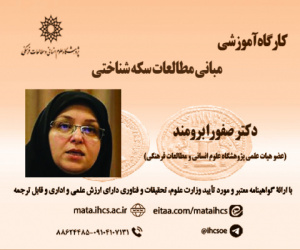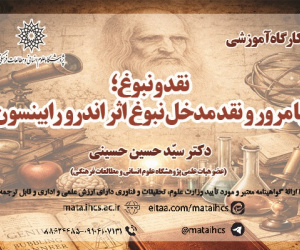جایگاه اصل حداقلی بودن حقوق کیفری در سیاست جنایی (مقاله علمی وزارت علوم)
درجه علمی: نشریه علمی (وزارت علوم)
آرشیو
چکیده
امروزه حقوق کیفری به تنها داروی شفابخش برای درمان بسیاری از ناهنجاری های اجتماعی تبدیل شده است. نگاهی به قوانین کیفری نشان می دهد که روند رو به رشد جرم انگاری در سال های پس از انقلاب در ایران شتاب بیشتری گرفته است. حجم وسیع قوانین کیفری، نوع و میزان پاسخ های کیفری و جمعیت کیفری زندان ها نشان می دهد که حقوق کیفری در بیشتر موارد بعنوان نخستین راه حل قانونگذار دیده شده است. این دیدگاه با جرم انگاری امنیت مدار یا حداکثری شناخته می شود. در مقابل در سالیان اخیر دیدگاه جرم انگاری حداقلی در حقوق کیفری مطرح شده است. مطابق این چشم انداز، حقوق کیفری نباید مصادیقی از رفتار را منع کند که برای رسیدن به اهداف الزام آور دولت ضرورتی ندارد. اگر ابزار و تدابیر دیگر بتوانند راحت تر به هدف برسند، ضرورتی برای جرم انگاری باقی نخواهد ماند. لذا حقوق کیفری باید تنها بعنوان آخرین راه حل بکار رود. این مقاله، از رهگذر روش توصیفی- تحلیلی، جایگاه اصل حداقلی بودن حقوق کیفری در سیاست جنایی را ارائه کرده تا نگاه کیفرگذاری قانونی و کیفرگزینی قضایی، قلمروی مجاز مداخله ی کیفری و نیز شیوه های کنترل اجتماعی از نوع کیفری و ناکیفری و الگوهای حاکم بر آن مشخص گردد.The Role of the Principle of Minimality in Criminal Law within Criminal Policy
Today, criminal law is often viewed as the primary solution for preventing and addressing many social disorders and deviant or antisocial behaviors. In Iran, following the Islamic Revolution, there has been a significant increase in the criminalization and punishment of various activities. The extensive volume of criminal laws, the nature and scope of criminal responses, and the growing prison population indicate that criminal law has become the default response for legislators in many situations. This approach is often referred to as maximal criminalization or security-oriented criminalization. In contrast to this perspective, the notion of minimal criminalization has gained traction in recent years. According to this view, criminal law should not be excessively broad, nor should it criminalize behaviors that are not essential for achieving the state’s binding goals. If other tools and measures can more effectively achieve these goals, criminalization or punishment should not be necessary. Thus, criminal law should be seen as a last resort, employed only when other measures are inadequate. The principle of minimal criminalization, alongside other fundamental principles such as the principle of innocence, necessity, and transparency, has been proposed as a constitutional principle. However, this principle has received limited attention from legislators, making its position in criminal policy highly significant. The concept of criminal policy—often associated with social control—is categorized into four models based on the relationship between crime, deviance, state response, and society: crime-state response, crime-social response, deviance-government response, and deviance-social response. These models give rise to various response patterns, including the state pattern, social pattern, integrated pattern, and zero pattern. Within the state pattern, two sub-patterns emerge: liberal society and the security-oriented government, each responding to crime or deviance in distinct ways based on their ideological foundations. Criminal policy based on the minimal principle advocates for the reduction or abolition of criminal law, replacing it with non-criminal alternatives. This approach favors removing deviant behaviors from the scope of criminal law and avoiding criminal responses for minor offenses. Measures like dejudicialization, decriminalization, and depenalization are central to this perspective. Governments, in turn, can choose between two criminal policies: a minimalist approach to criminalization and punishment, which prioritizes harm reduction, and a maximalist approach based on legal patriarchy, which focuses on strict government control over crime prevention. The Iranian penal system exemplifies the security-oriented government model, which is characterized by broad state intervention in both individual and social life. In this model, the government has the authority to intervene in various aspects of society, often leading to extensive criminalization across all spheres of human interaction. Since the Islamic Revolution, Iranian legislators have criminalized a wide array of behaviors, contributing to the inflation of criminal laws and increasing state involvement in the private lives of individuals. This view is reinforced by institutions such as the Council for Expediency of the System, the Executive Branch, the Assembly of Experts, and the Guardian Council, which expand the scope of criminalization. In contrast, the liberal model limits the scope of criminal law to behaviors that directly harm others and applies minimal intervention, avoiding state intrusion into individuals’ private lives. This model does not criminalize minor deviations from social norms, and it prioritizes the protection of personal privacy. Over the past two decades, as the prison population has increased and criminal cases have multiplied, the Iranian criminal justice system has begun to shift toward a more minimalist approach in criminalization and punishment. The primary outcomes of minimal criminal policy include the use of non-criminal responses before resorting to criminal procedures, as well as decriminalization and depenalization. This principle suggests that punishment should only be applied when other measures have proven ineffective. Additionally, if criminal processes are deemed necessary, a minimal criminal response should be adopted. The use of more severe punishments, whether in terms of their nature or severity, contradicts the principle of minimal criminal law. This article uses a descriptive-analytical method (library study) to present a criminal policy grounded in the minimal principle and compares it with rival policies to illustrate the evolving perspective on legal punishment and judicial sentencing. It explores the permissible scope of criminal intervention and social control, both criminal and non-criminal, as well as repressive and non-repressive methods, and examines the patterns governing them.









